
I recently discovered a beautiful old churchyard called Dunleckney Parish Churchyard.
Dunleckney – Dun Leicne – Fort of the Flagstones – also known as – Fort of the Hillside.
So, it is a parish in the barony of Idrone East, County Carlow. Besides, this place which is situated near the River Barrow was anciently the seat of the Kavanaghs, Kings of Leinster. The ancient territory of Idrone and Fort, also Glascarring in County Wexford, was granted by Strongbow to his brother Raymond le Gros. He in turn granted them to the Carew family. They owned estates at Dunleckney (caput of the barony) and at Techmullin (St. Mullins). A William Carew (d. 1213 A.D.) gave the advowson of Dunleckney with burgages there. And also at St. Mullins to the Nunnery of Graney in Co. Kildare before 1207 A.D. This Abbey, founded around 1200 A.D. by Walter de Riddelesword, was officially dissolved in 1583 A.D. And King Henry VIII granted the lands to Lord Leonard Grey, Marshall of Ireland.
So, it is possible this area (graveyard) was the site of an earlier Christian settlement.
In fact, Gaelic monks founded a monastery nearby at Aghta in the 6th century (St. Fintan).
Moreover, in 1300 A.D. a preceptory of the Knights Templars was founded here. Continued only until 1308 A.D. when it was suppressed. A preceptory of the Knights Templars is purported to have existed at the nearby Ballymoon Castle (possibly they are one and the same).
Furthermore, in the wooded area, adjacent to the graveyard (west boundary) is a large mound. There are reasons to believe that this was the site of a Norman motte. A garrison of Knights, with squires and servants was located here in the late 12th-early 13th Century. The evidence for the motte and bailey is both historical and visually evident. An existing natural mound was used but reshaped to the new requirements, e.g. raising the overall height. Another factor in the choice of many sites was the presence of an existing church nearby. According to the Archeological Inventory of Co. Carlow, there are eight motte in the county, including Dunleckney and St. Mullins. The area around the motte is at present overgrown with dense woodland and undergrowth. A larger settlement was later established a short distance away to the west, coinciding with the grounds of Dunleckney Manor house and outbuildings.
So, the churchyard contains the ivy-covered ruins of two churches.
The detached three-bay, single-cell Church of Ireland was built in the late eighteenth century. But abandoned in the mid-nineteenth century when service transferred to St. Mary`s Church, Bagenalstown. The walled enclosure adjoining the west wall of the church was a common feature of churches of the late 18th and early 19th centuries. Reserved for the landowner`s family, it contains tombstones for members of the Bagenal and Newton families. Colonel Newton married into the Bagenal family. Walter Bagenal founded the nearby town of Bagenalstown in the 1700s. He had a vision of mirroring the city of Versailles in northern France. And built a grand courthouse and some public buildings. Shortly after, his efforts were frustrated by the re-routing of the coach road away from the town. His courthouse is now the town library.
So, according to local tradition, during the Penal Law period, the bell of this church was rung half an hour before Sunday mass. A large Church of Ireland parish in those days, it had a vicar and curate presiding. During the early 1990`s a violent storm blew down the belfry.
The ruin to the right – Dunleckney Parish Churchyard, pre-Reformation, is of a much older church.
The present remains consist of a rectangular structure which is probably medieval in date. In this church is a plaque to the memory of two eighteenth-century parish priests. It was erected by Fr. Michael Prendergast in 1810 and commemorates his uncle and grand-uncle both, like himself, priests of Dunleckney. This reveals a typical tradition of priesthood within Irish families. About the middle of the 18th century, Roman Catholic services were transferred to a timber church at Khnocknacorrah nearer the town, but still on Dunleckney estate. This church of the Penal Law period was in use for about 80 years, before the present parish of Bagenalstown was formed early in the 19th century, St Andrew’s Church became the parish church. This church was located next to a row of lime trees that still grow there.
Moreover, the burial ground around the churches contains many interesting gravestones.
There is also a private graveyard for the Bagenals, Newtons, and Veseys of Dunleckney Manor. This area, known as the Newton Plot, was originally outside of the boundary of the main graveyard. It became part of the main graveyard when the graveyard was extended along the south and west boundaries in 1846 A.D. approx. It is enclosed by a yew tree. The old road to Newtown passed along the west and north boundaries of the graveyard. The entrance to the graveyard is on the partial remains of this road.
Furthermore, around 1990 A.D., local historian, William Dillon, aka Reynolds Fieldcrest, conducted a survey of the graveyard. He recorded as faithfully and as accurately as possible, the inscription to be found on the headstones, tombstones, etc. of those interred here. A book containing a record of his work can be viewed in the local library and in the County Carlow Museum.
A point of interest is the number of graves which have casual or temporary markers. Some were taken from the church ruins.
Then, a memorial stone was erected in 2020 A.D. by the graveyard committee to the memory of all who are buried here, in both marked and unmarked graves.
What`s more, the annual graveyard mass takes place here on the fourth Friday of June.
Source: Information board in Dunleckney Parish Churchyard.
Location of Dunleckney Parish Churchyard:
Below are photos I took in June 2021.
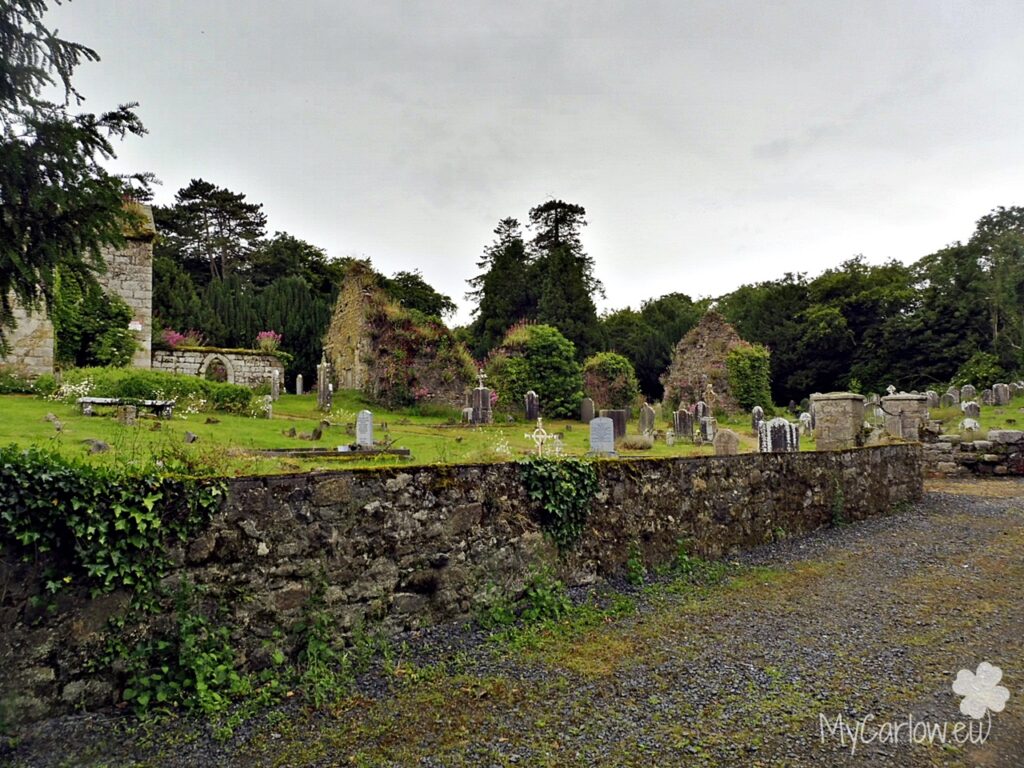
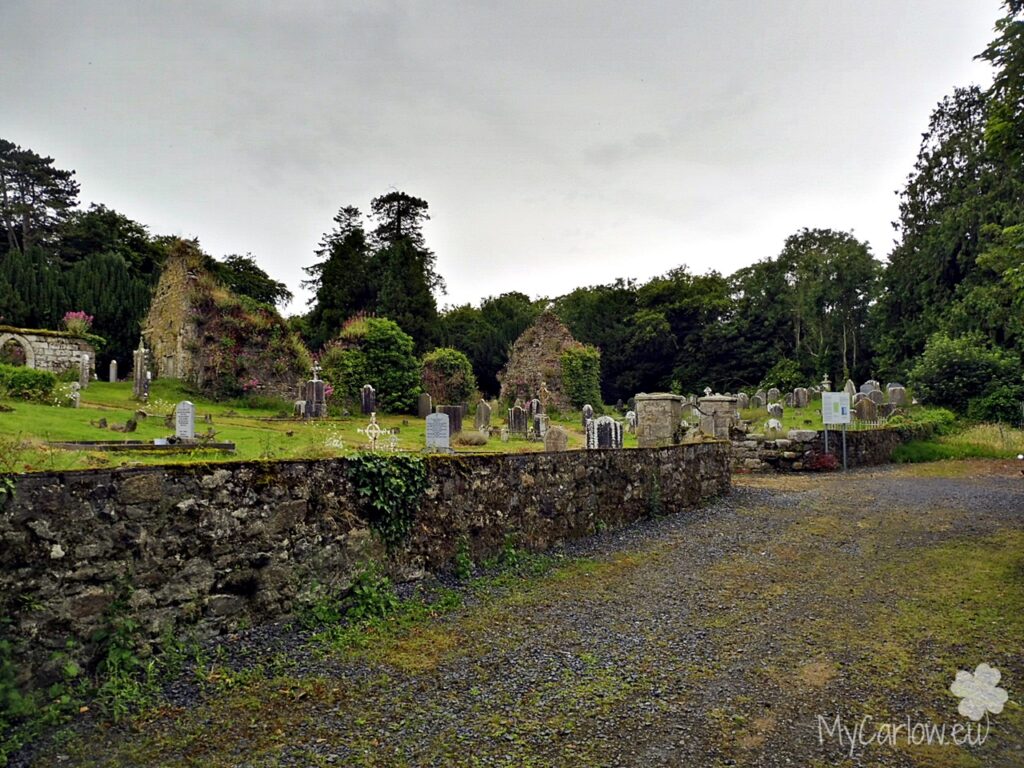
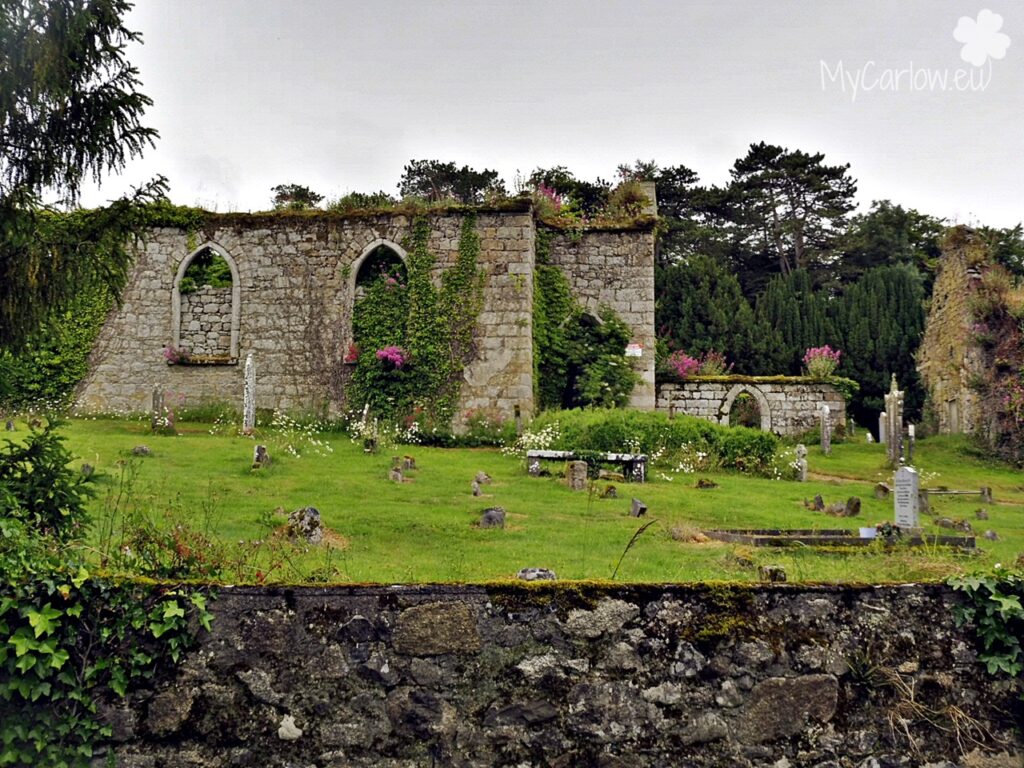
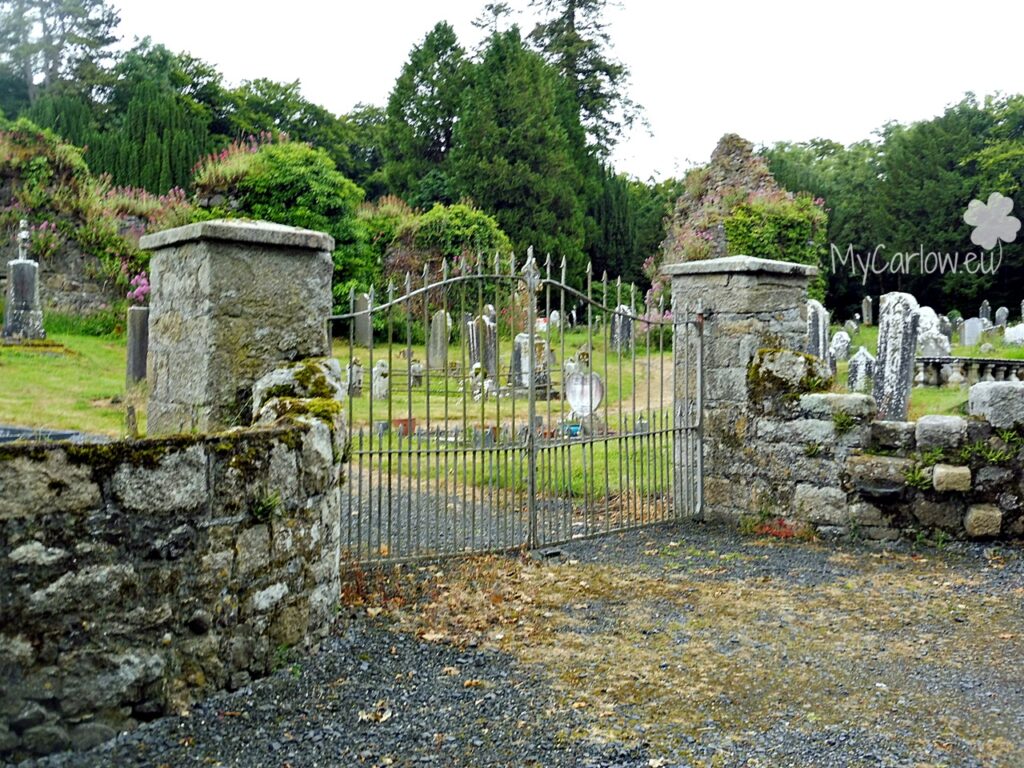
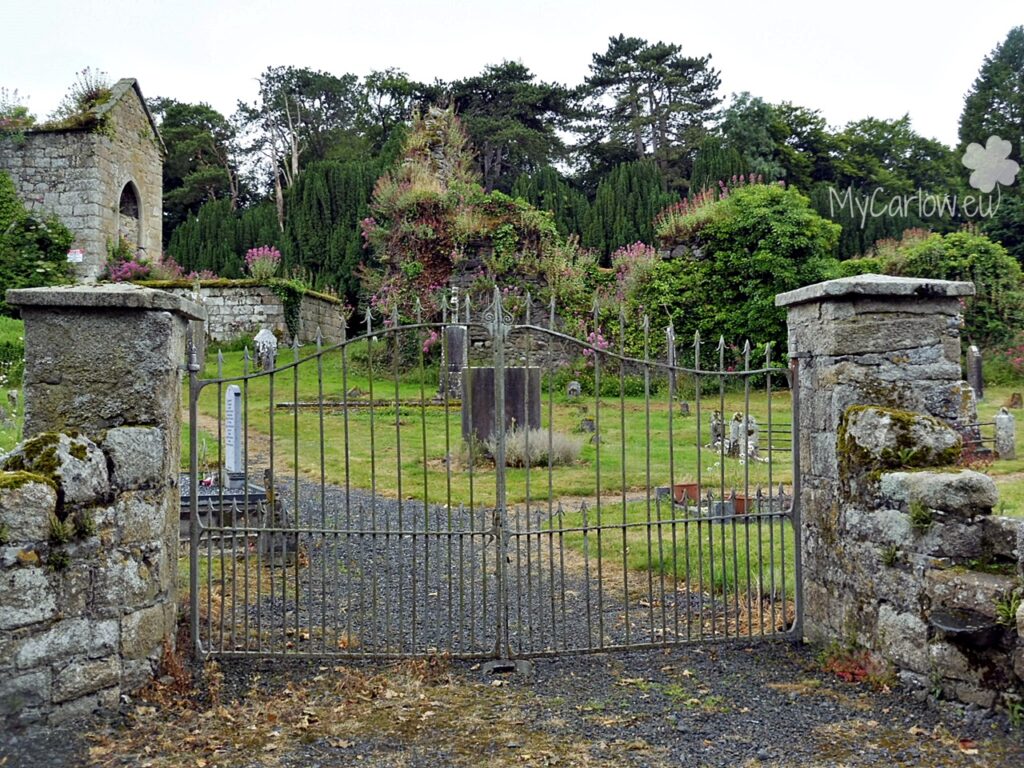
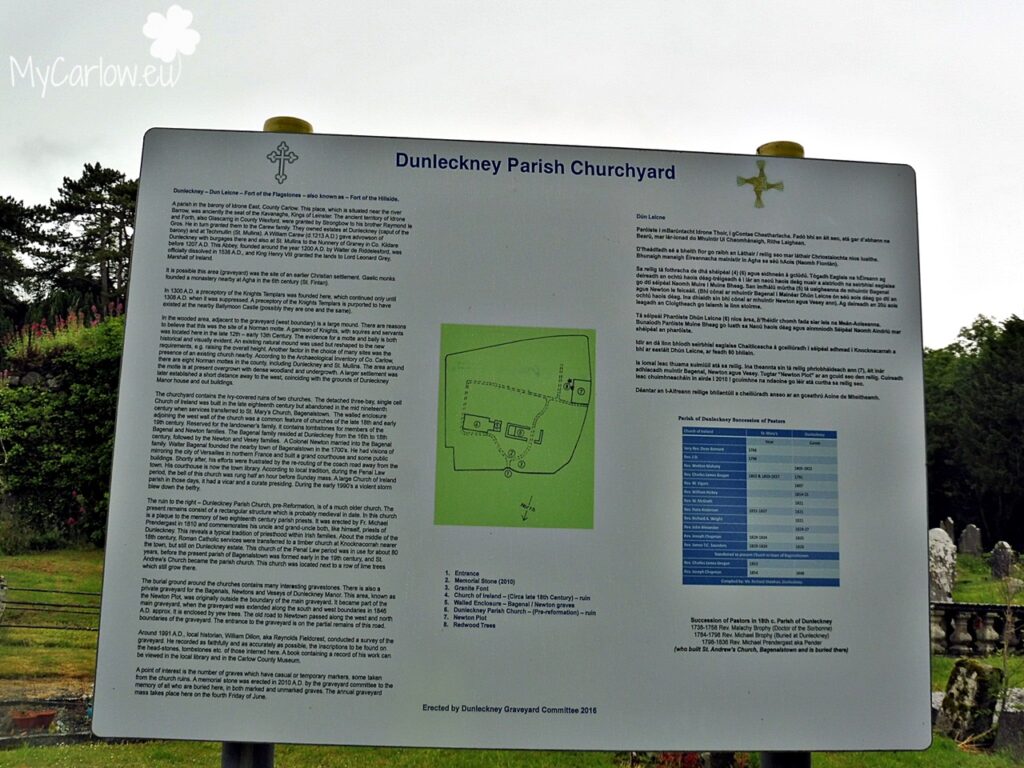
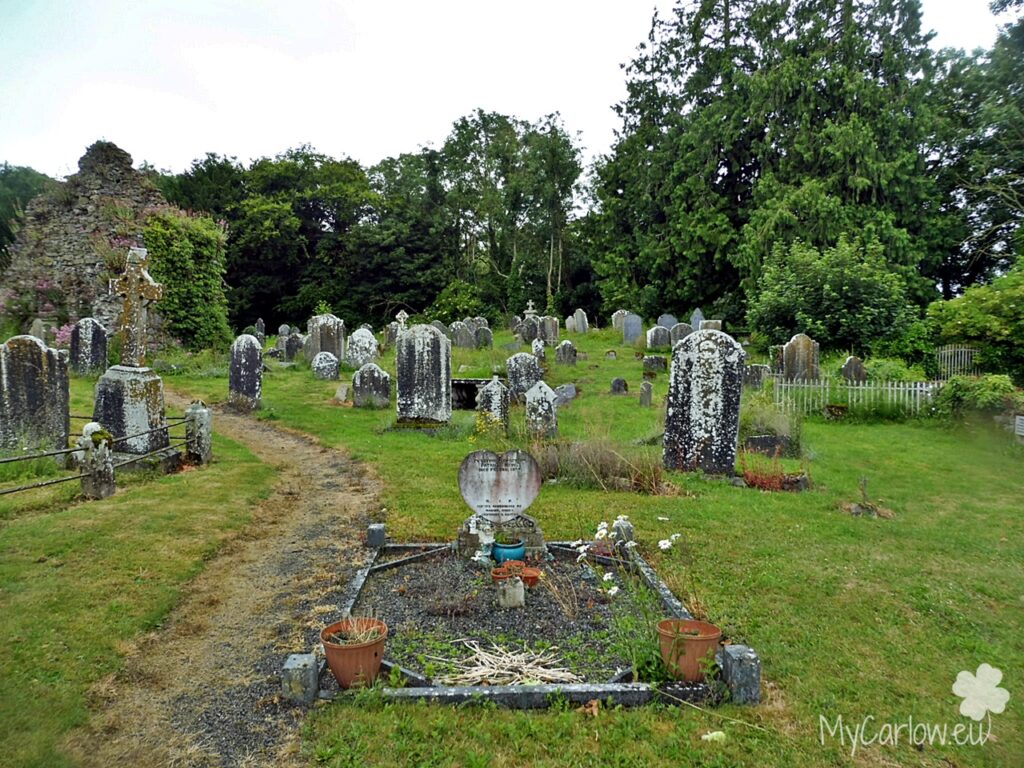
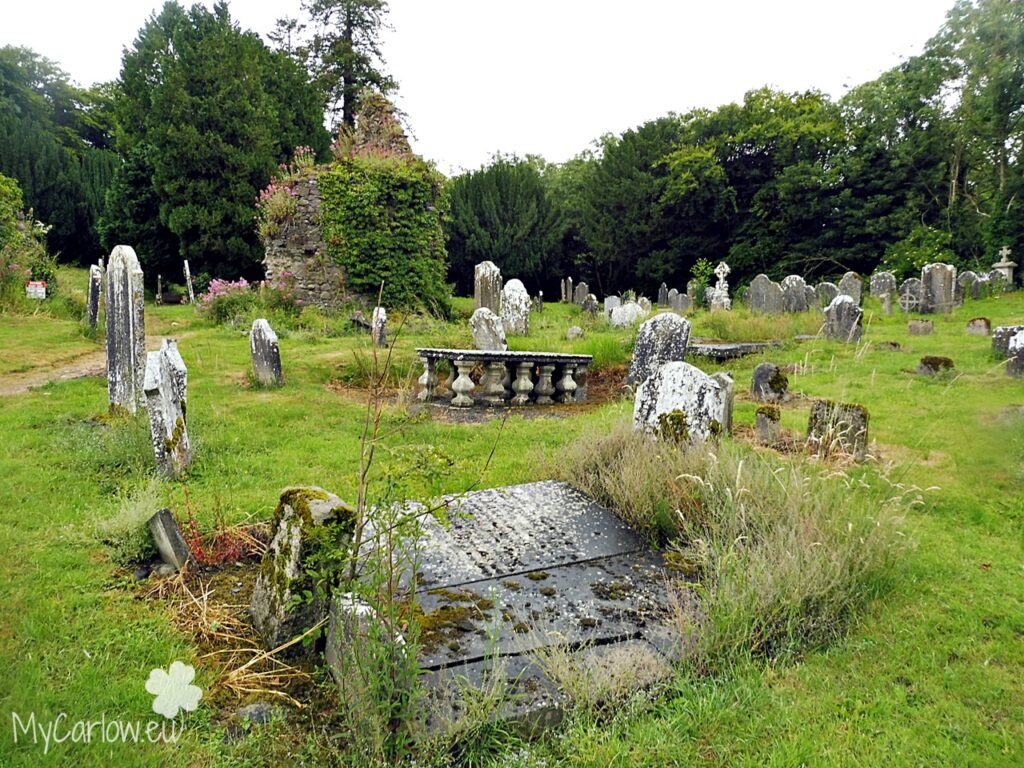
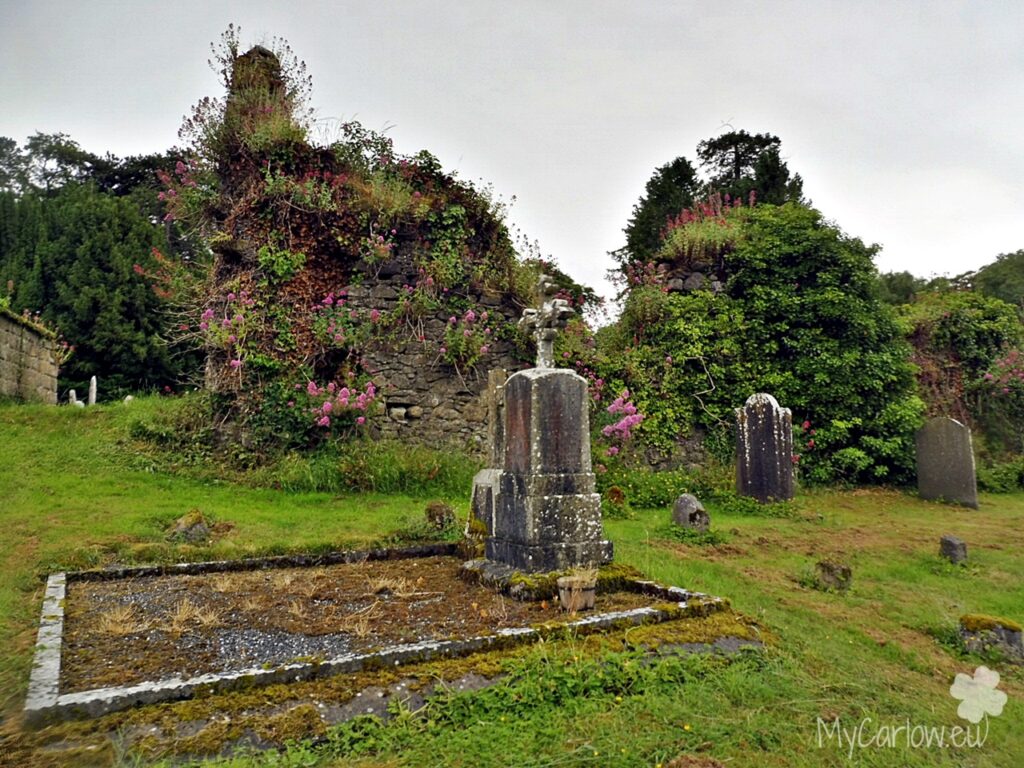
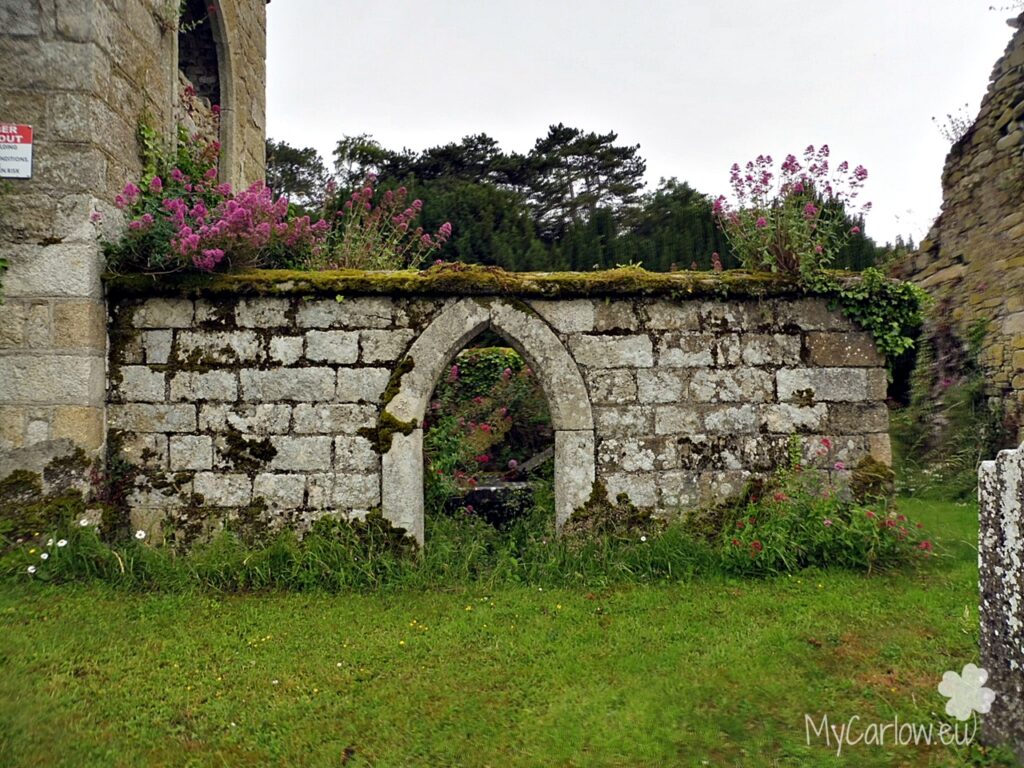
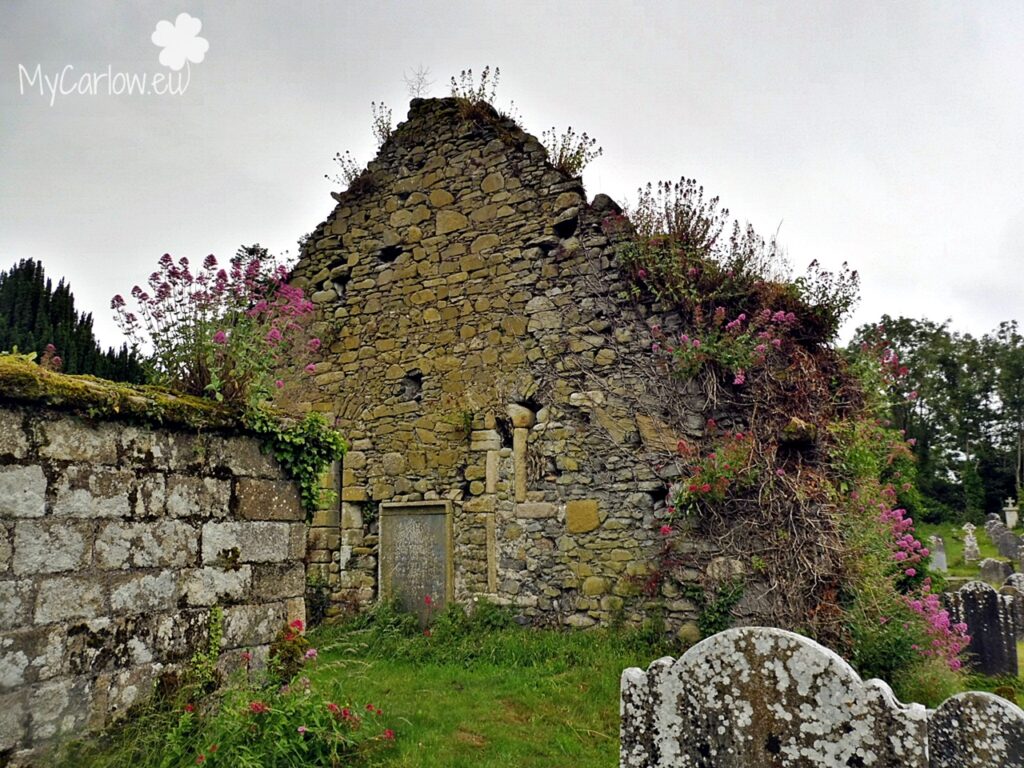
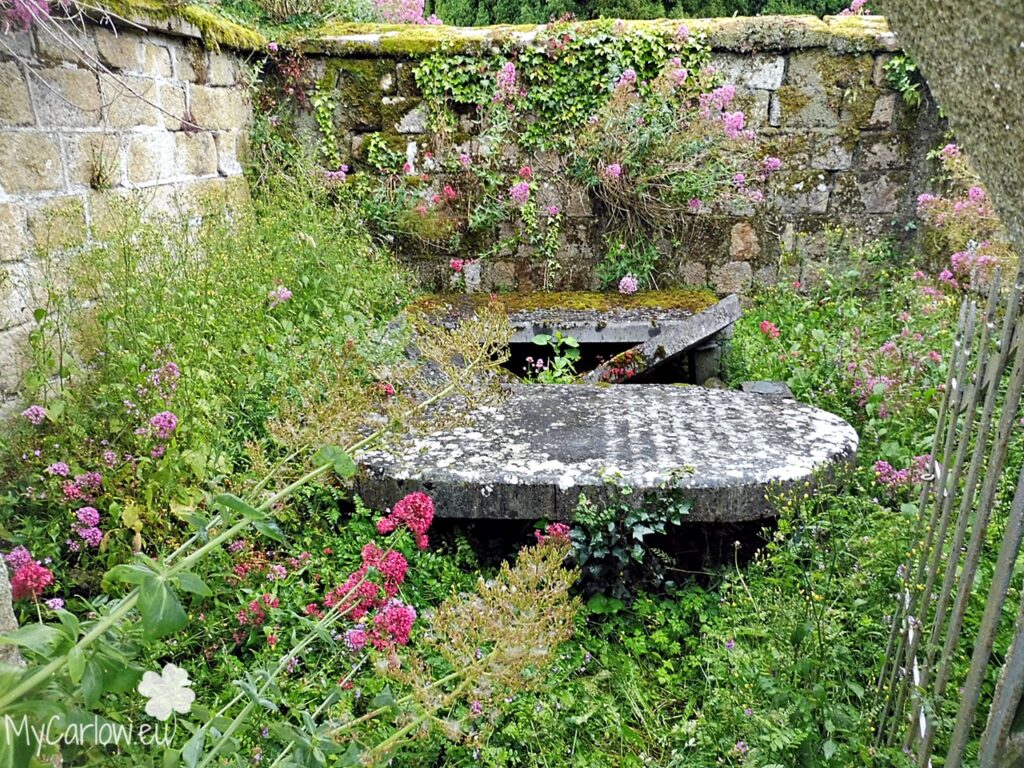
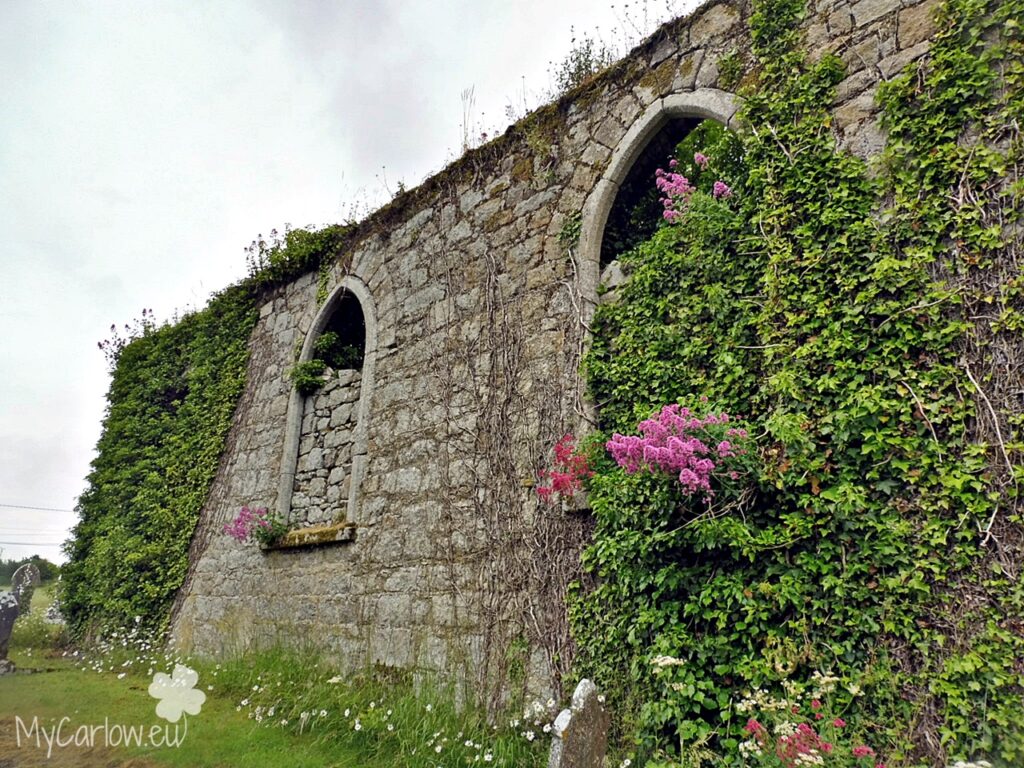
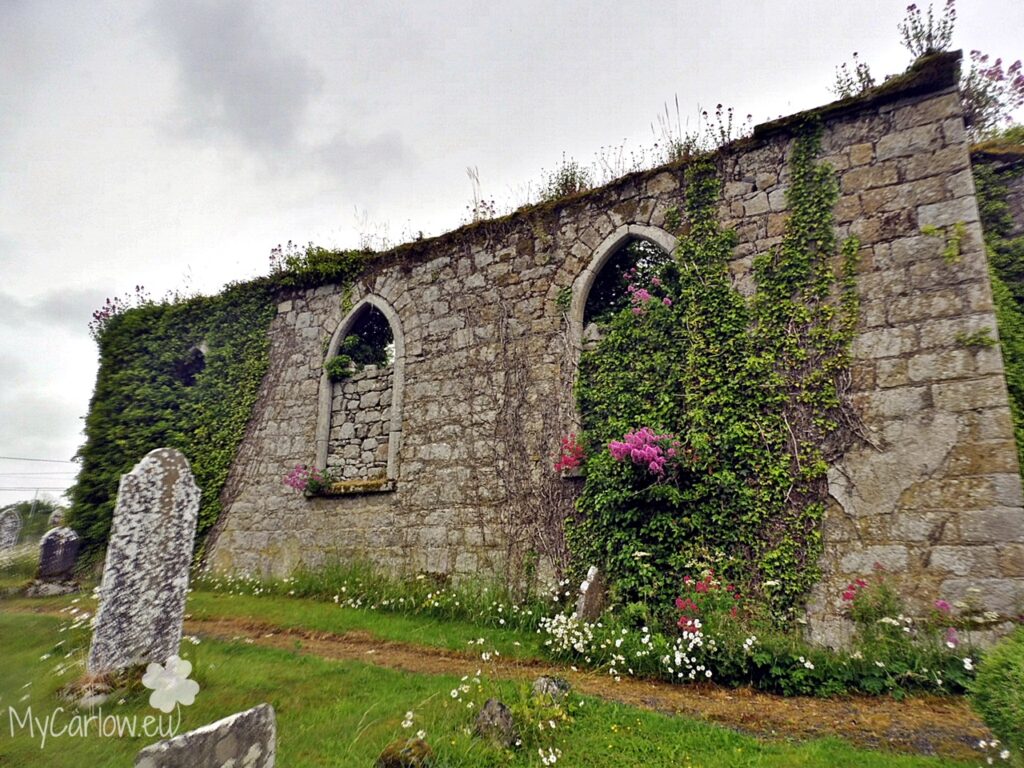
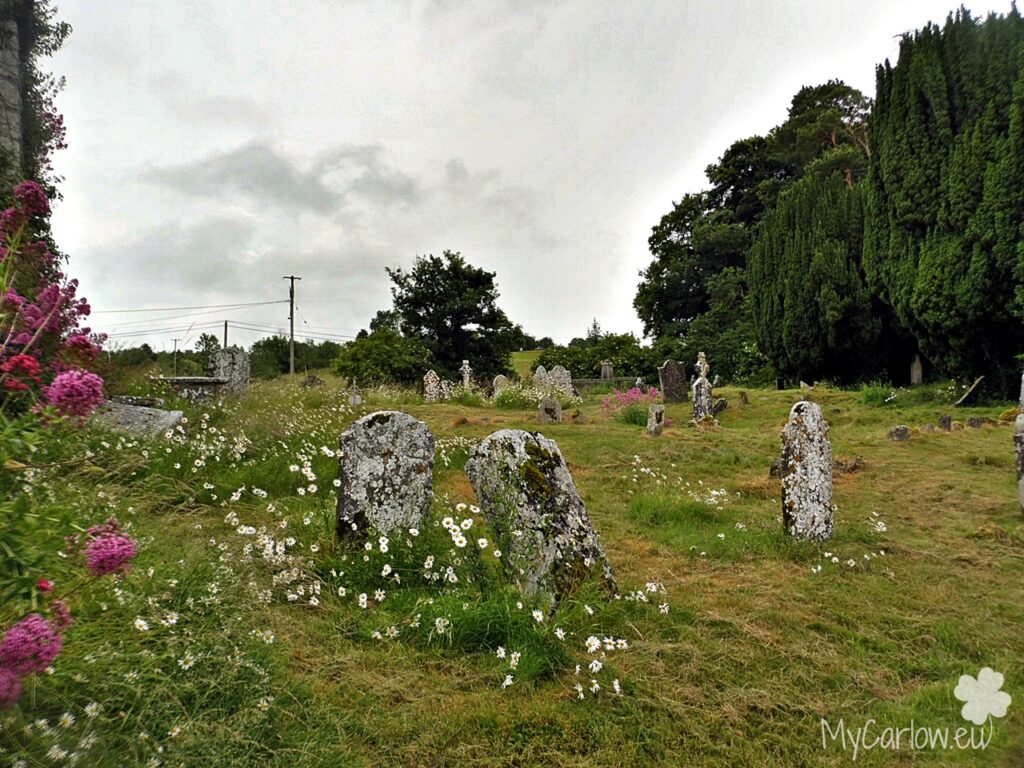
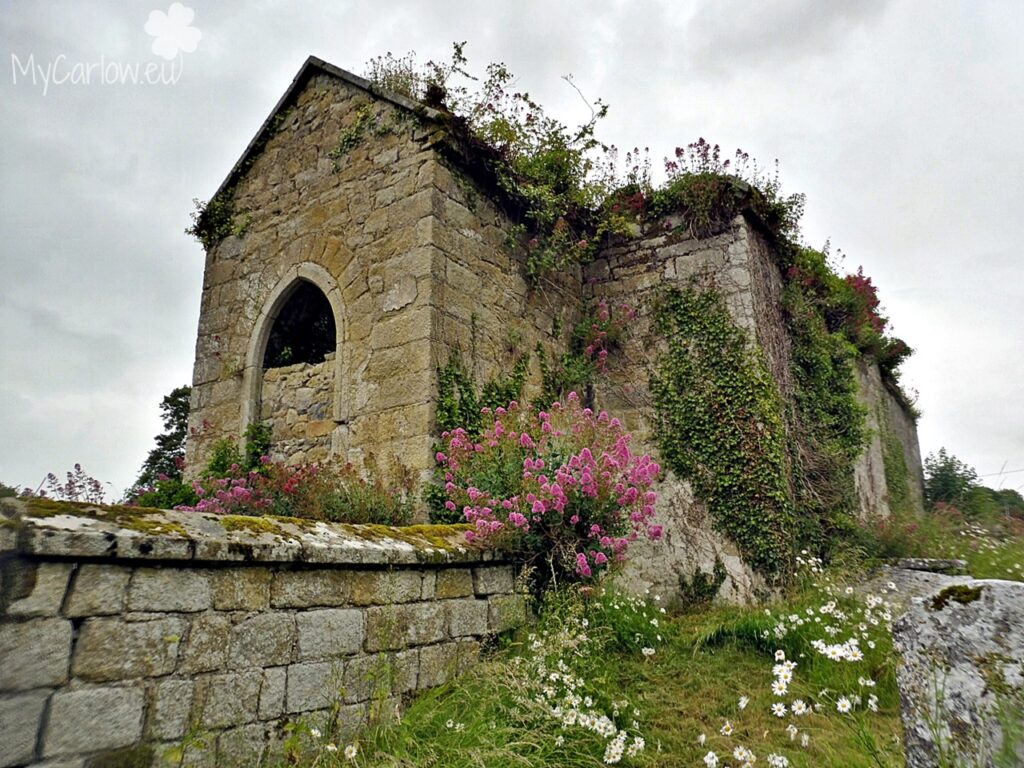
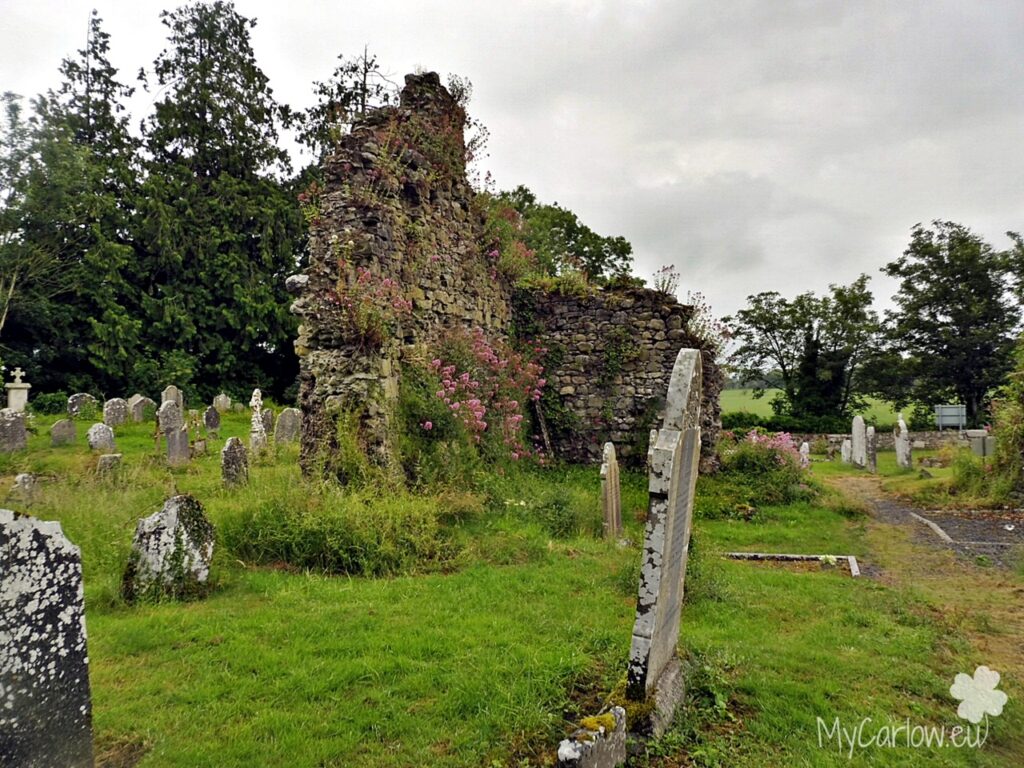

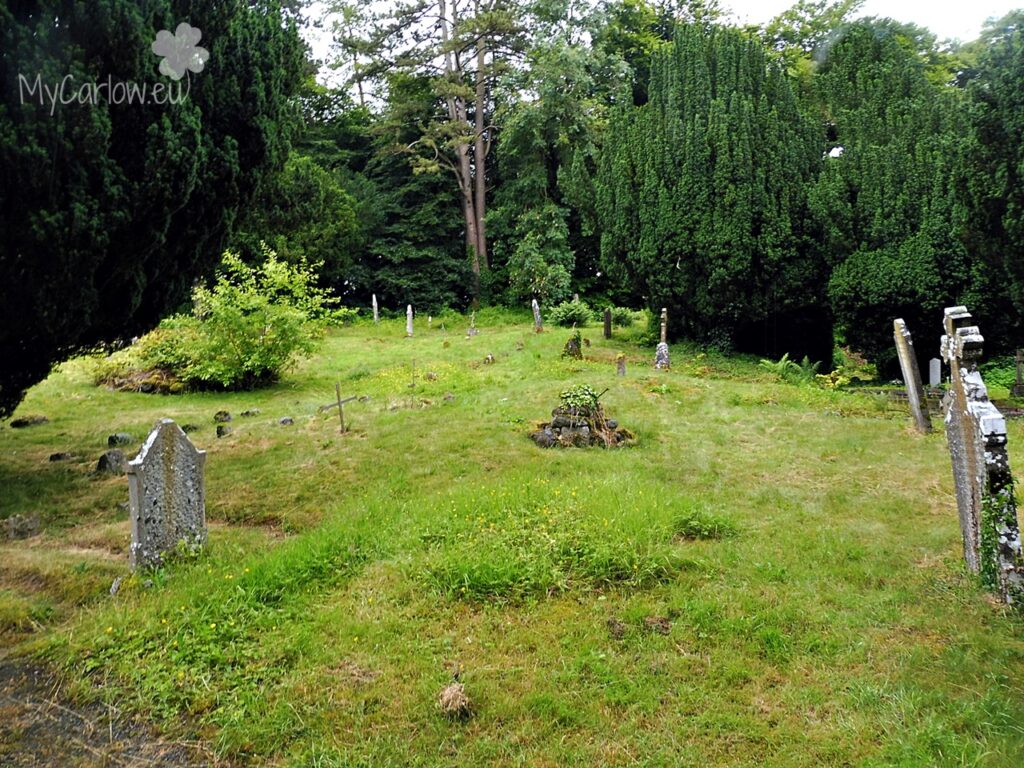
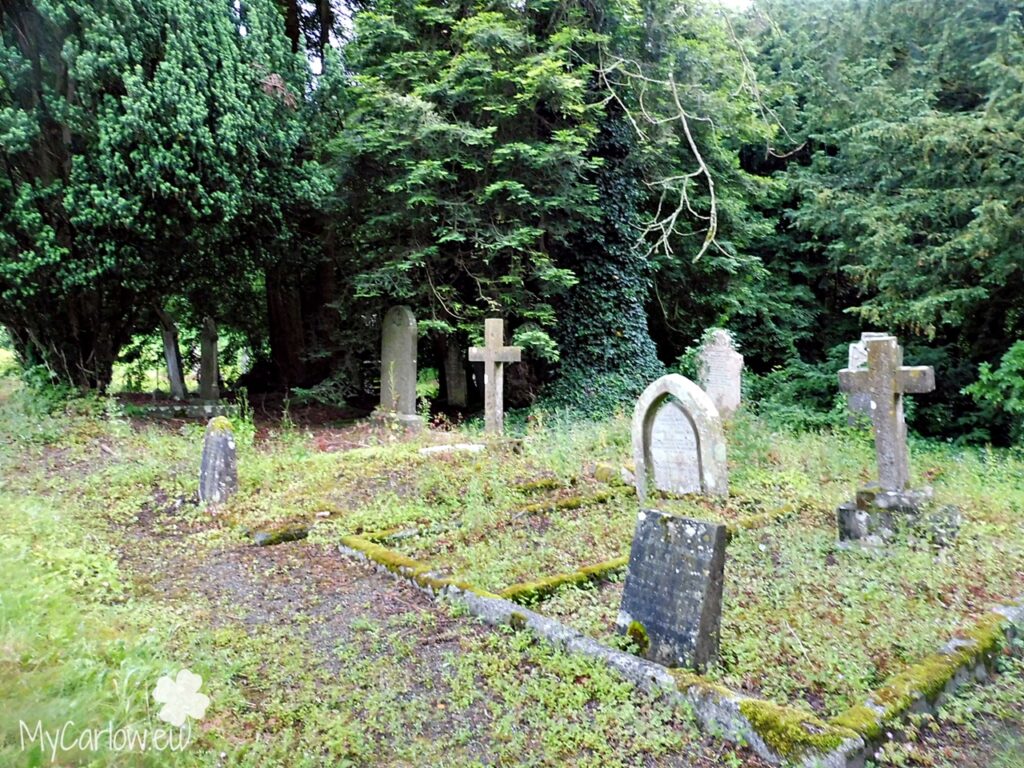
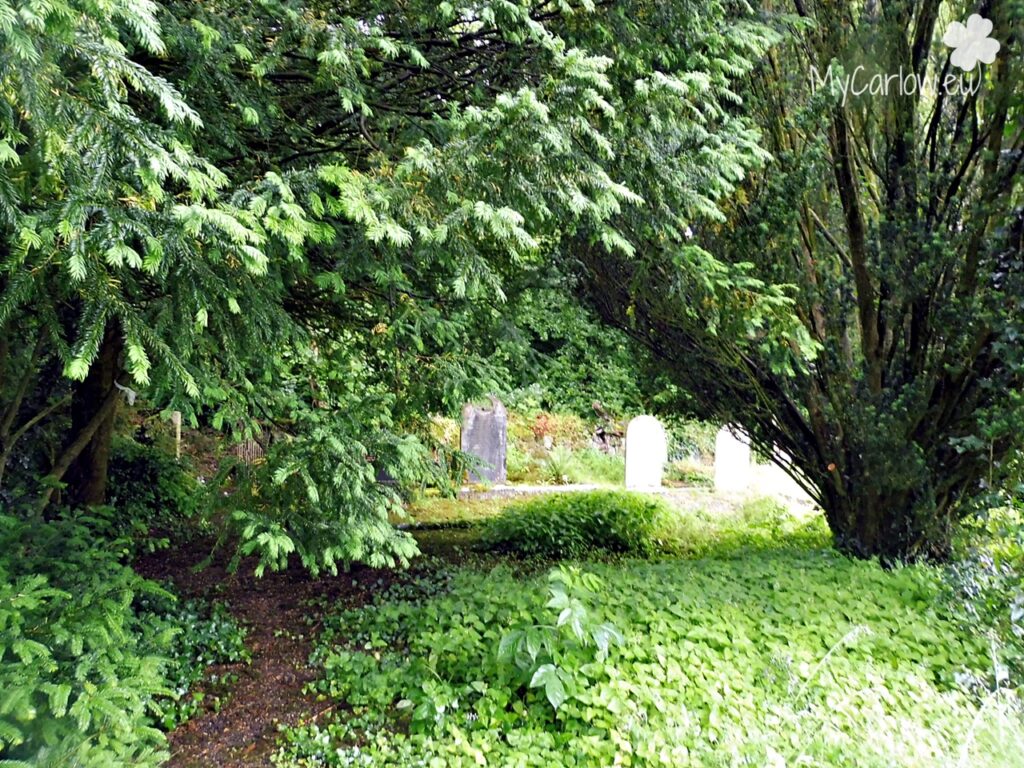
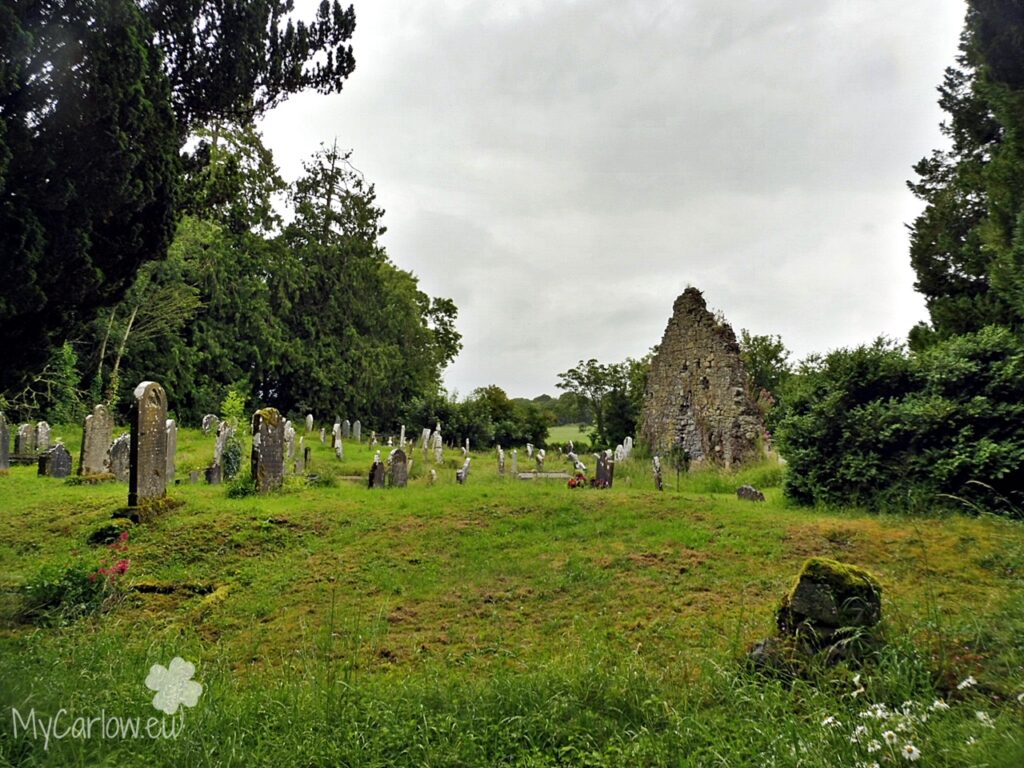
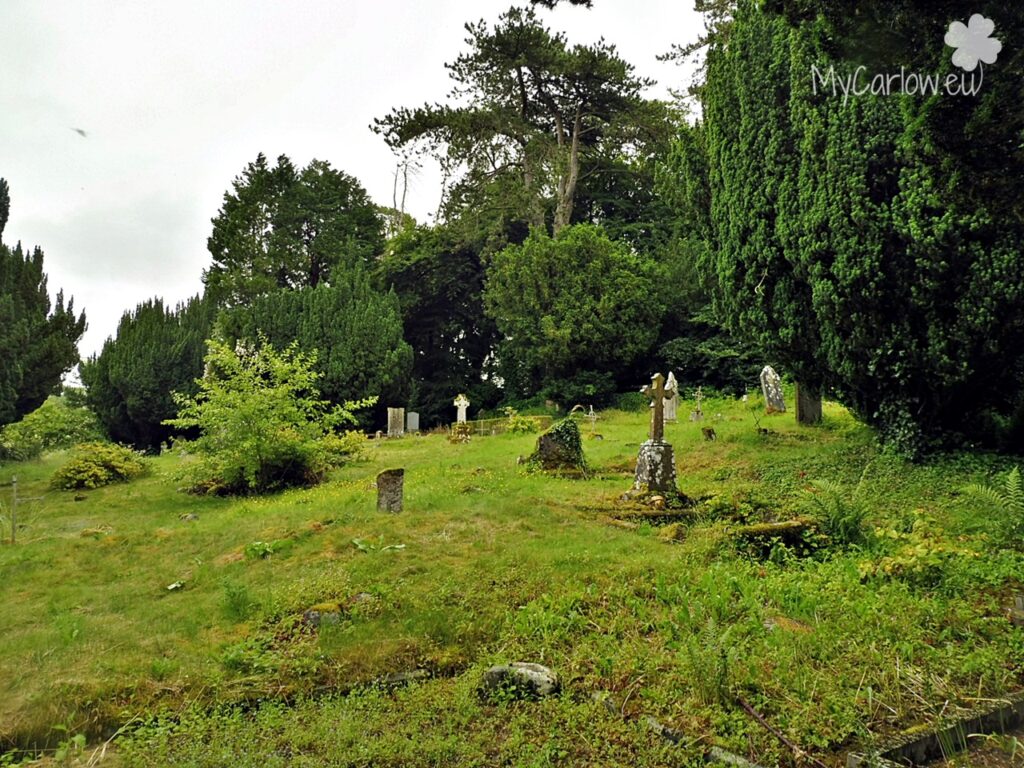
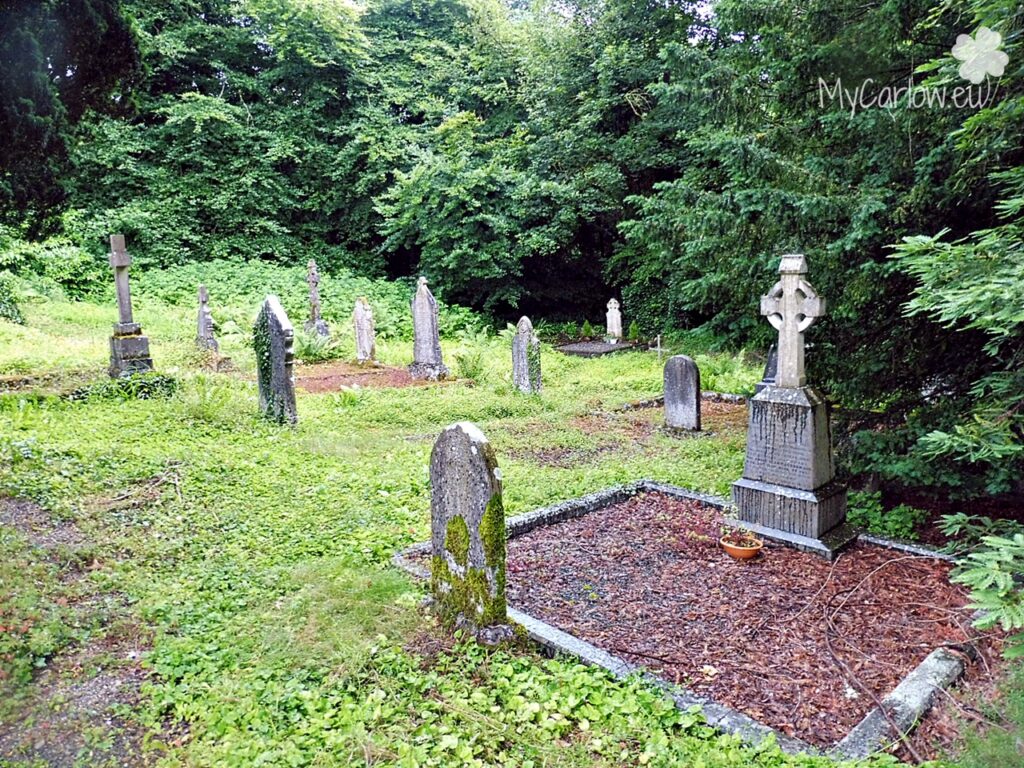
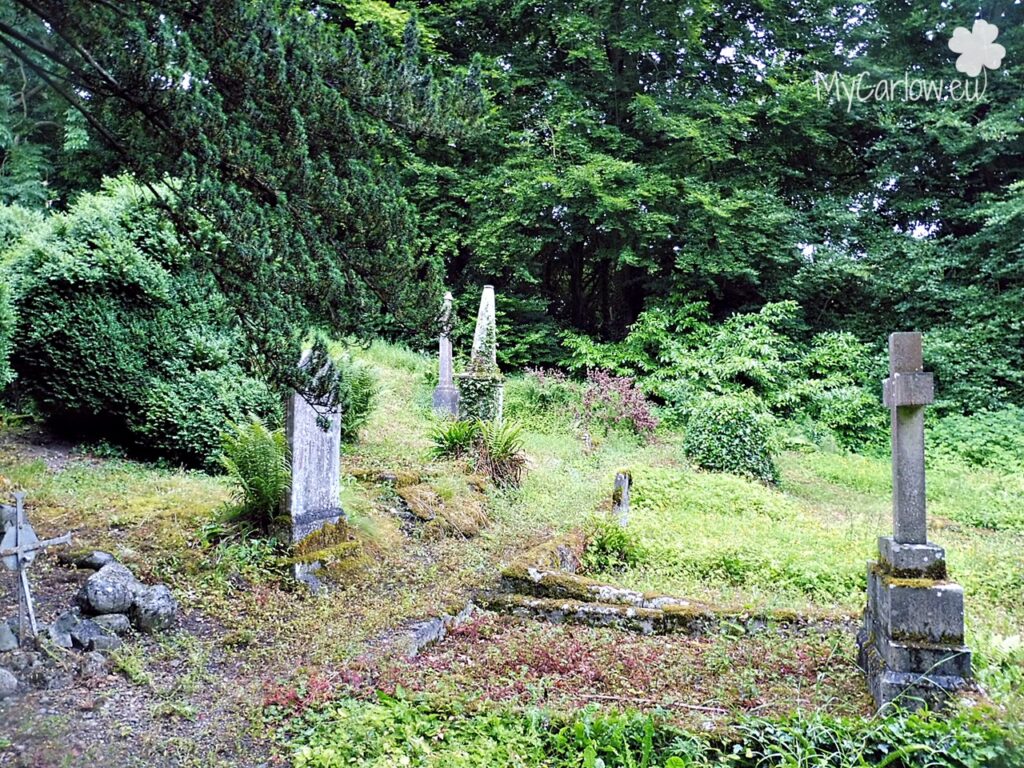

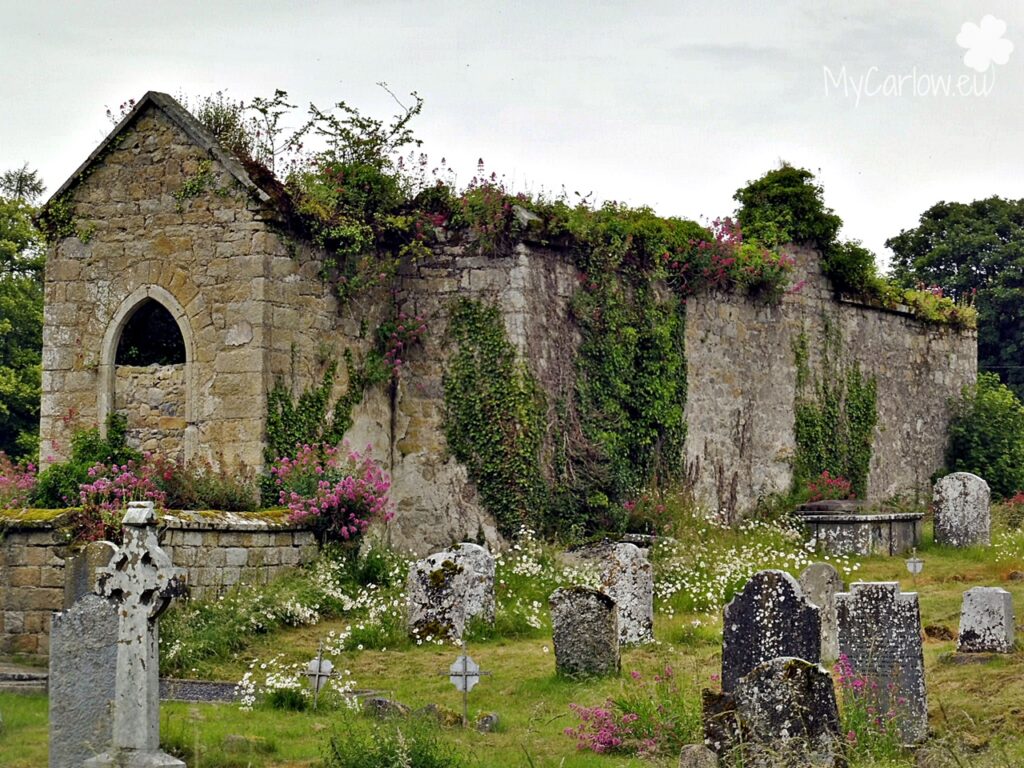
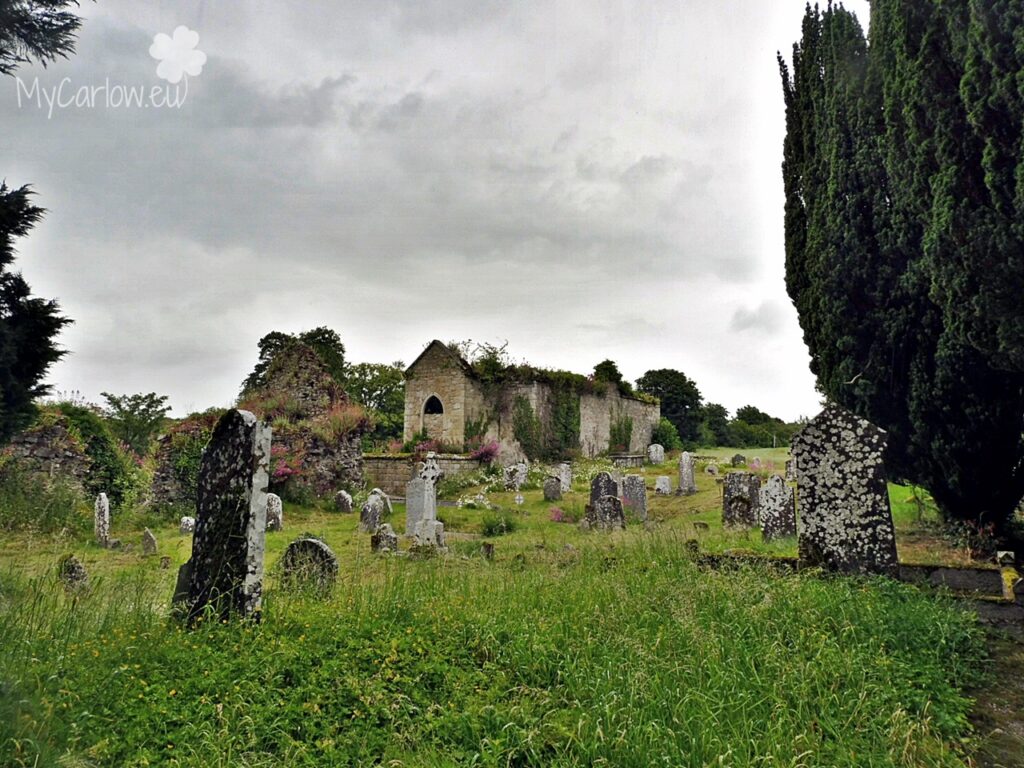
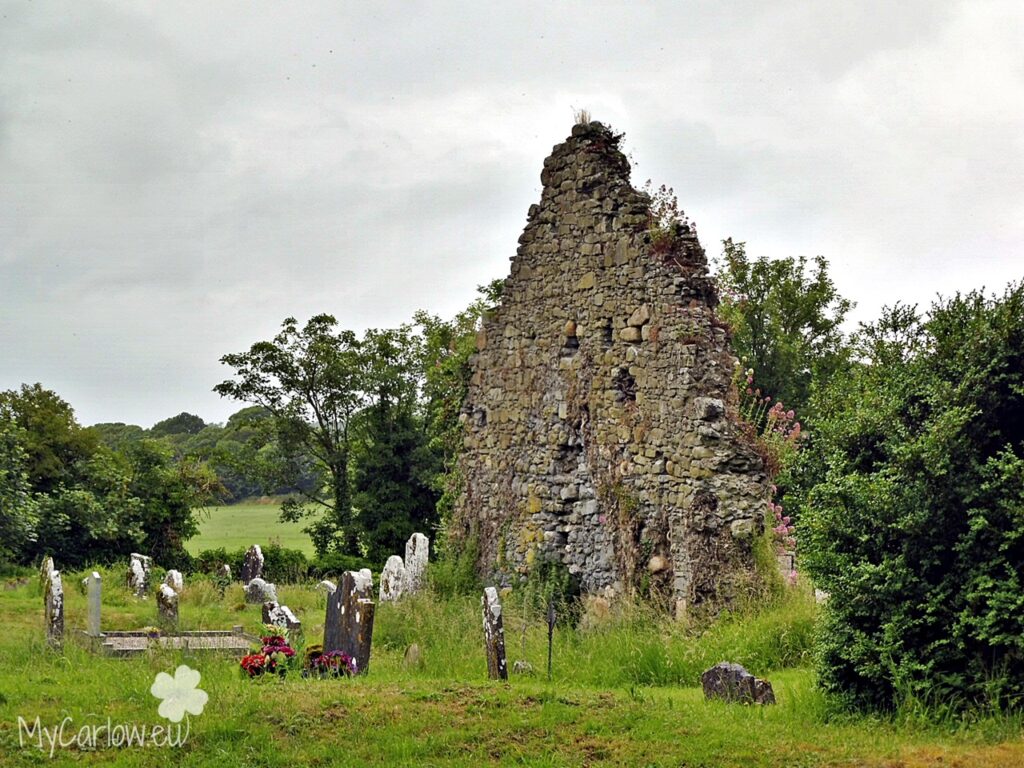

This is a fantastic find. My late husbands mother came from Bagenalstown, County Carlow
You missed a lot of the graveyard. To the left of the front gate as you walk in, the graves there and where you follow the path around the left of the big church where the bell tower was close to the main road and beond into that corner.
Hi Malgorzata,
My wife and I are travelling to Ireland for the first time this September. We’ve discovered that my wife, Sharon Keogh’s great great great grandfather (Michael Kehoe) and great great great great grandfather (James Kehoe) are buried in the cemetery there.
We found this info through an online document (PDF p16) that recorded the inscription of the stones in the graveyard. Would you be so kind as to let us know if there is any way to get in touch with the Dunleckney Graveyard Committee so as to find out where this specific stone may be. Our time there will be limited.
Many thanks for this blog and your description of the site. We would sincerely appreciate any contact information you might be able to pass along.
Best,
David Acomba